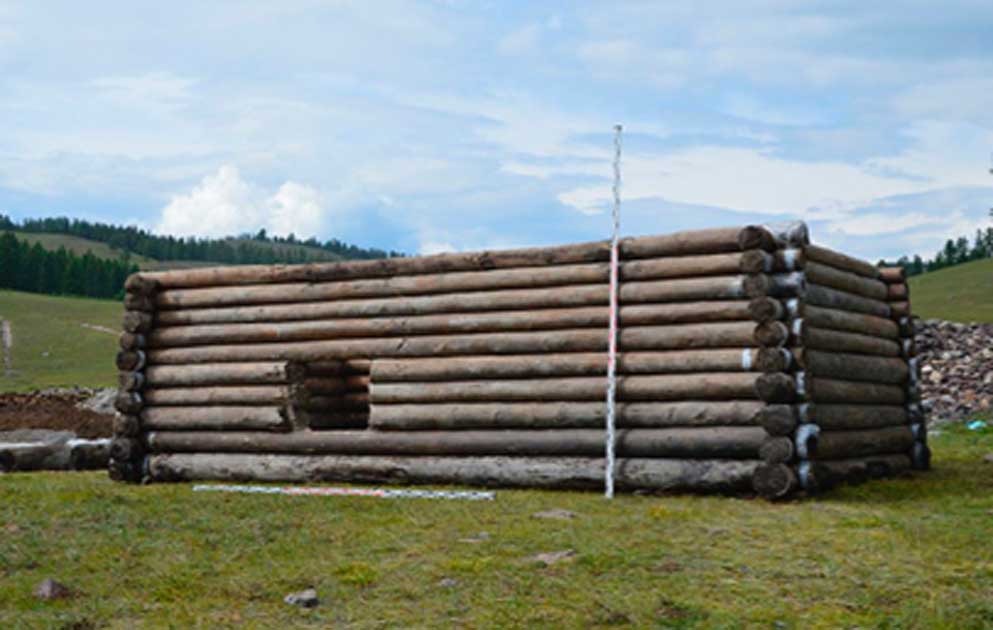2,300 Year-Old Log Cabin Dug Out Of Permafrost Rebuilds Perfectly
By The Siberian Times reporter
Timber from a potentate’s log cabin was superbly persevered in permafrost, allowing us to see how ancient man lived. The house itself, that has been extracted from permafrost and reconstructed, was not built as a dwelling but nevertheless is seen by archaeologists as showing the style of domestic architecture more than two millennia ago.
Pazyryk Log Cabin Tomb Discovered
The attractive log cabin was a prefabricated construction by the prehistoric Pazyryk culture to house an elite tomb - in which was buried a mummified curly-haired potentate and his younger wife or concubine. The mound in the Altai Mountains was originally 138 feet (42 meters) in diameter, and this tattooed couple went to the next life alongside nine geldings, saddled and harnessed.
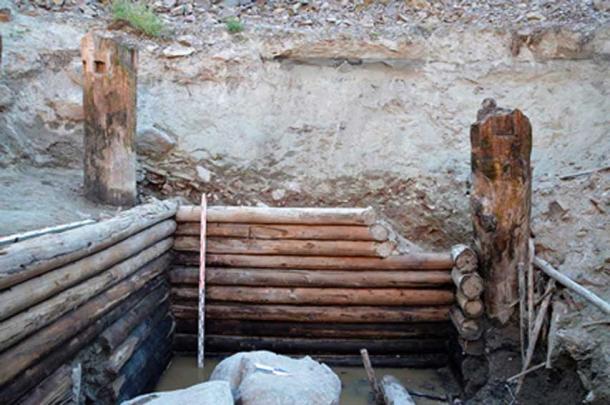
The house is seen as showing the style of domestic architecture more than two millennia ago. (Nikita Konstantinov / Siberian Times)
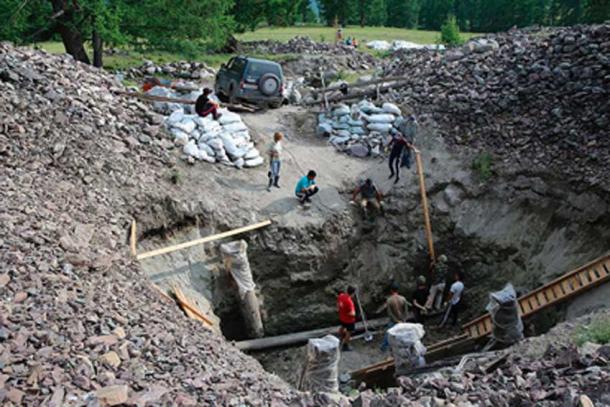
The attractive log cabin was constructed by the prehistoric Pazyryk culture to house an elite tomb. (Nikita Konstantinov / Siberian Times)
This structure was the outer of two wooden houses in the large burial mound in the valley of the river Bolshoy Ulagan at an altitude of around 5250 feet (1600 meters) above sea level.
The core of the mound including the ice-preserved bodies of the elite couple had been excavated by Soviet archeologists in 1949, and many of the finds are on display in the world famous State Hermitage Museum in St. Petersburg.
As we have previously written, the pair - who owned perhaps the world’s oldest carpets - are currently undergoing an ultra-modern medical scan to establish the cause of death. Experts will reconstruct the appearance of the ancient pair and study the techniques of mummification in more detail.
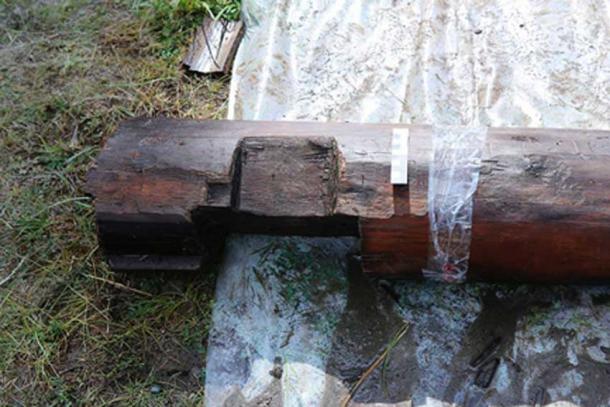
The prehistoric log cabin was a prefabricated design. (Nikita Konstantinov / Siberian Times)
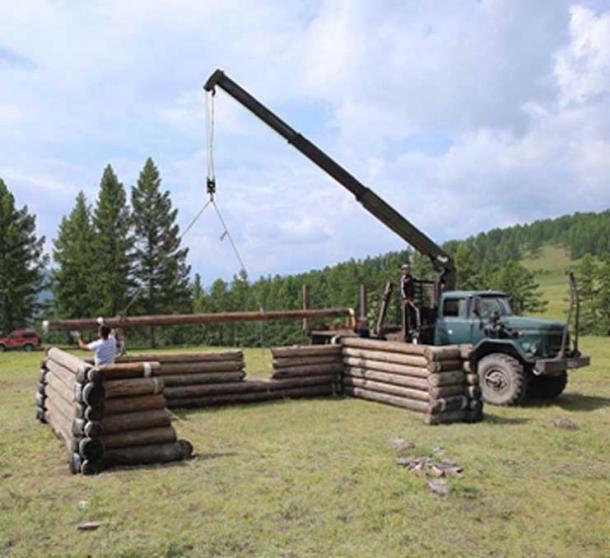
The log cabin was a recently reconstructed. (Nikita Konstantinov / Siberian Times)
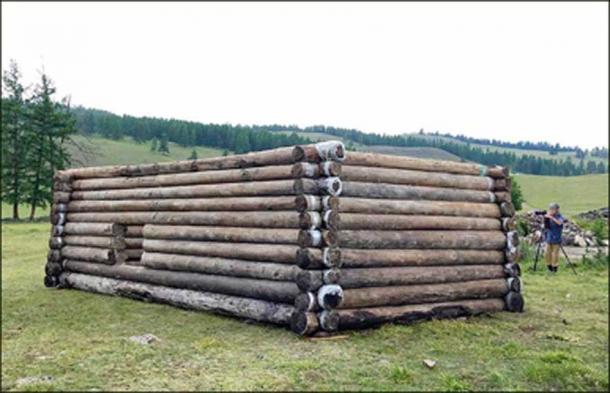
Experts excavated the log house and reassembled it right next to the mound. (Nikita Konstantinov / Siberian Times)
The Architecture of the Log Cabin
Yet in 1949 this fascinating house was left in the permafrost ground - and only retrieved now from the so-called Fifth Pazyryk Barrow, to the excitement of archeologists. Head of the excavation Dr. Nikita Konstantinov from Gorno-Altaisk State University, was full of admiration about the skills of the ancient craftsmen. “We took out the log house and reassembled it right next to the mound,” he said.
“We made a kind of express reconstruction, which made it possible to study the log house in detail. Notches were made on each of its logs - building marks…,” explained Dr. Nikita. This was like IKEA instructions today for building their products, telling modern day excavation volunteers how to correctly construct the prehistoric building kit. The result is seen in the pictures shown here.
“This log house was first built somewhere away from the mound, then it was dismantled, brought, and reassembled in the pit,” said Dr. Konstantinov. “Today we build in similar way, using Roman numerals, as a rule. In those times they simply made different numbers of notches.”
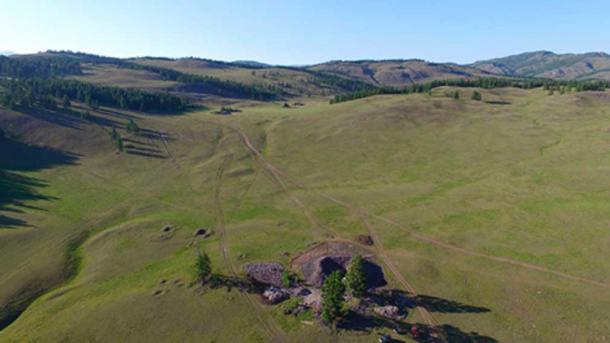
The mound in the Altai Mountains where the log cabin was discovered. (Nikita Konstantinov / Siberian Times)
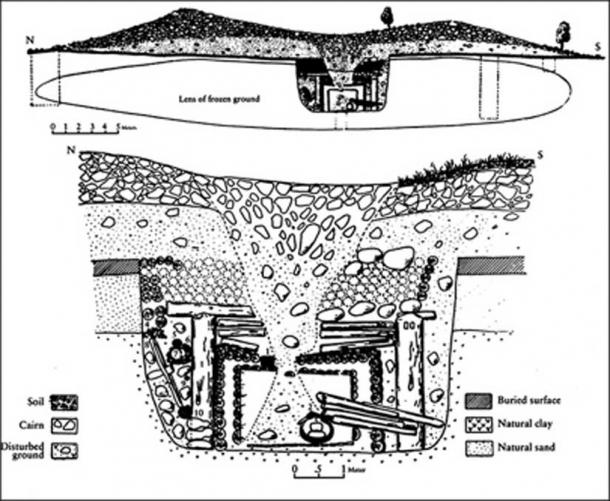
The core of the mound including the ice-preserved bodies of the elite couple had been excavated by Soviet archeologists in 1949. (Nikita Konstantinov / Siberian Times)
The archeological team followed the code left by the ancient craftsmen and reassembled the house without problems. “The Pazyryks knitted the corners of the building in a masterly way and chopped the attachment points of these logs. They fitted very cleanly…. When we built the log house and began to measure the height, it turned out that the height difference in the angles is only 0.4 inches (1 centimeter).”
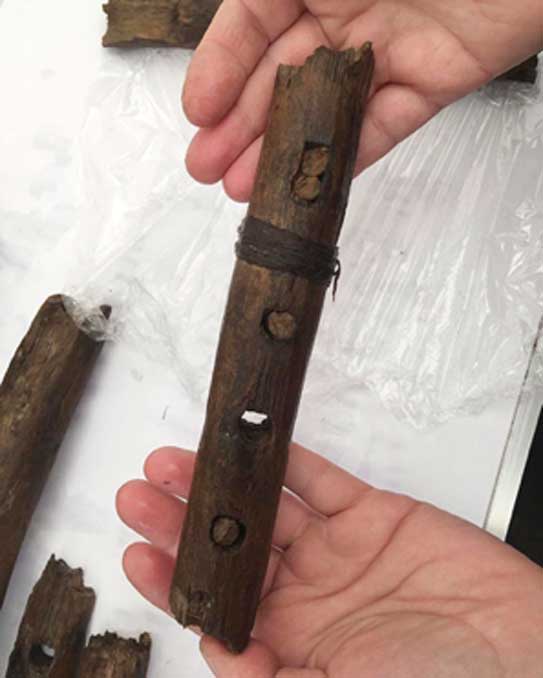
The Pazyryks knitted the corners of the log cabin in a way that they fitted very cleanly. (Nikita Konstantinov / Siberian Times)
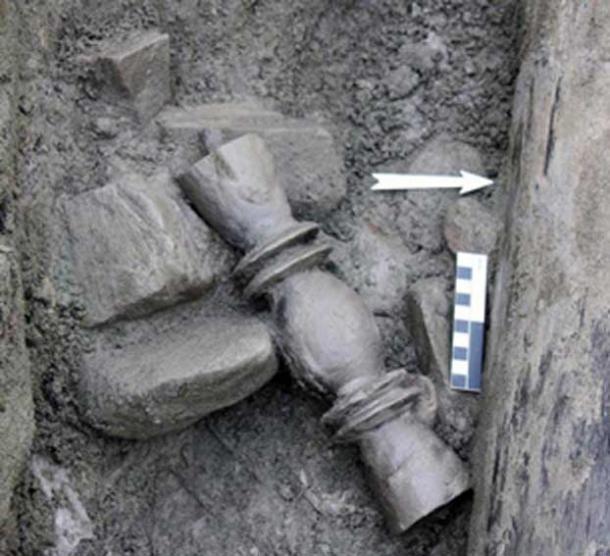
Workmanship of the pieces of the log cabin. (Nikita Konstantinov / Siberian Times)
- 1,200-Year-Old Mummies of Adult and Baby Found Cocooned in Copper, Fur and Bark in Siberian Permafrost
- 2,500-Year-Old Tattooed Ice Princess Wears Fur to Go on Public Display at Next New Moon
- Russian scientists make progress on secret of eternal life
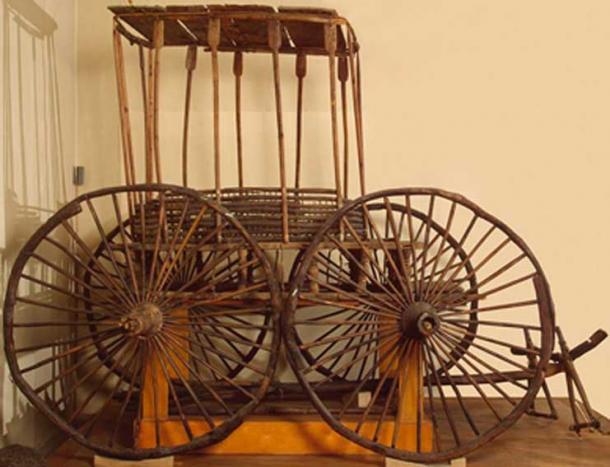
In the mound, archaeologists also found remnants of an ancient chariot - the rest of which is in the State Hermitage Museum. (Nikita Konstantinov / Siberian Times)
In modern constructions, a difference of 2.8 inches (7 centimeters) is allowed which shows how skillful the ancient craftsmen were. Dr. Konstantinov said “This is a funerary structure, but we can say with a high degree of probability that the log cabin was created in the image and likeness of the houses in which the Pazyryks lived. Of course, the shape or size would have been different, but in general, the same building methods were used here.”
The house, which was excavated this summer, has been moved to the National Museum of the Altai Republic in Gorno-Altaisk.
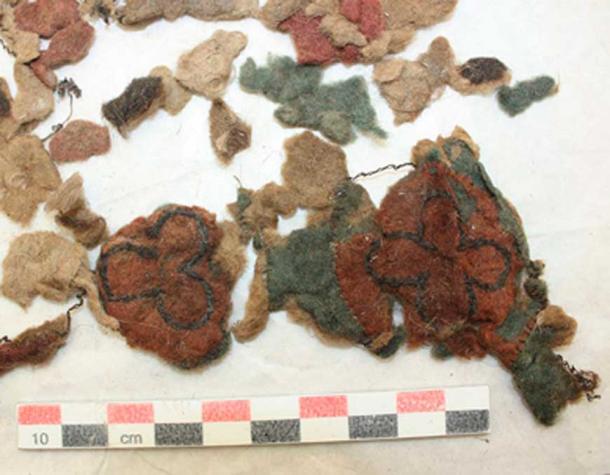
Remnants of an ancient felt carpet were discovered. (Nikita Konstantinov / Siberian Times)
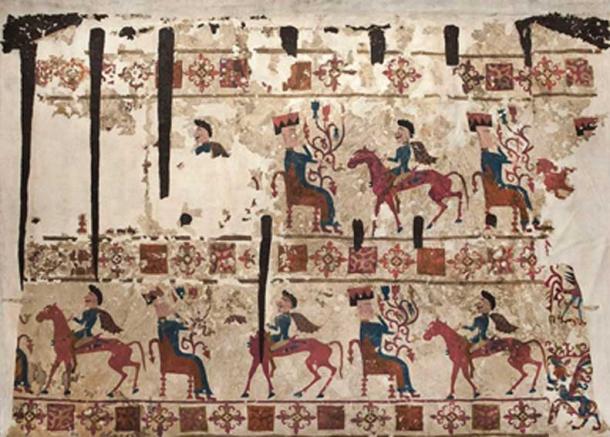
Discovered inside the log cabin. (Nikita Konstantinov / Siberian Times)
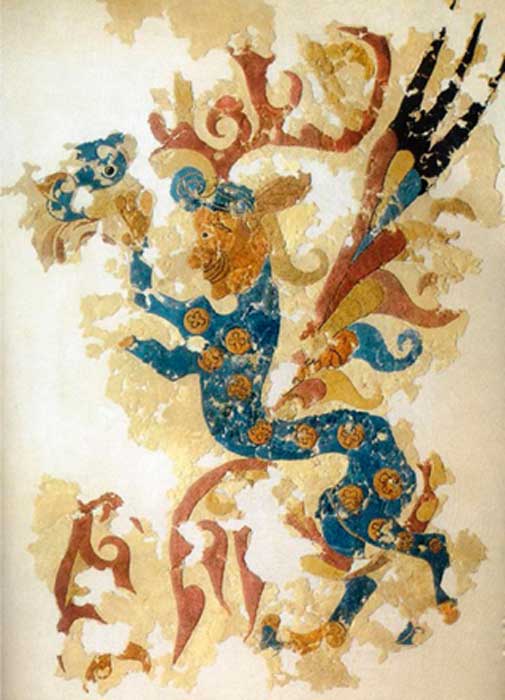
The image of a sphinx which decorated the walls of the inner house protecting the tomb were also discovered. (Nikita Konstantinov / Siberian Times)
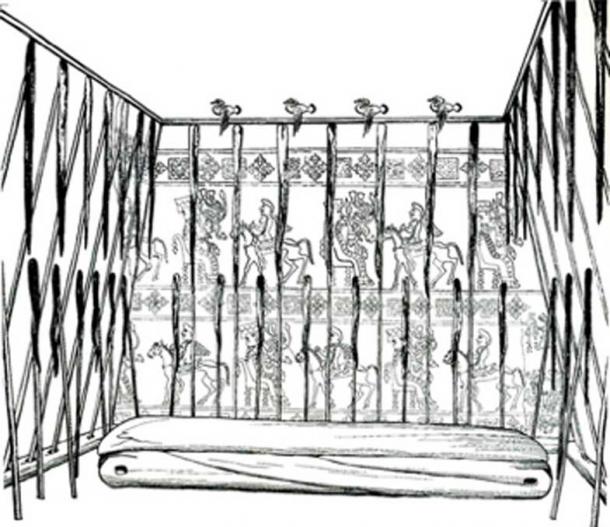
Sketch of the decoration on the walls of the inner house. (Nikita Konstantinov / Siberian Times)
Here the logs are being slowly dried. They had become waterlogged in the thawing permafrost. After the grave was excavated in the late 1940s, the site was not closed again and this exposed the permafrost. Nevertheless, the level of preservation is high.
Discovered in the Log Cabin Tomb
In the mound, archeologists also found remnants of an ancient chariot - the rest of which is in the State Hermitage Museum. Remnants of an ancient felt carpet with the image of a sphinx which decorated the walls of the inner house protecting the tomb were also discovered, as were other artifacts. The inner house itself was removed by the Soviet scientists and is also in the Hermitage.
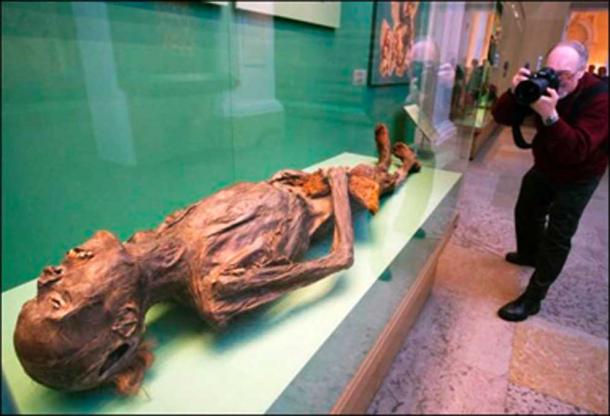
Ice-preserved bodies of the elite couple found in the log cabin tomb. (Lyudmila Barkova / Siberian Times)
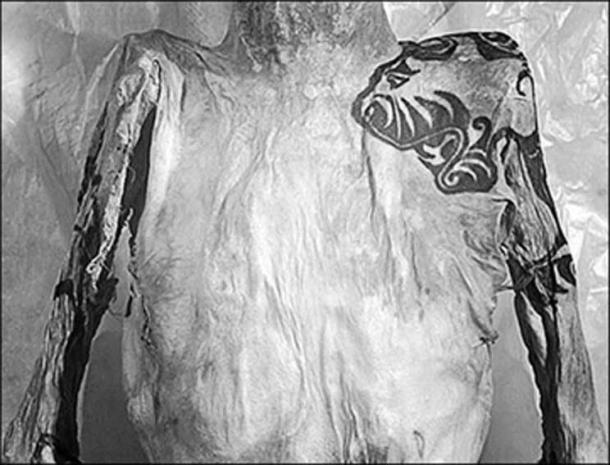
The elite couple was decorated with elaborate tattoos. (Lyudmila Barkova / Siberian Times)
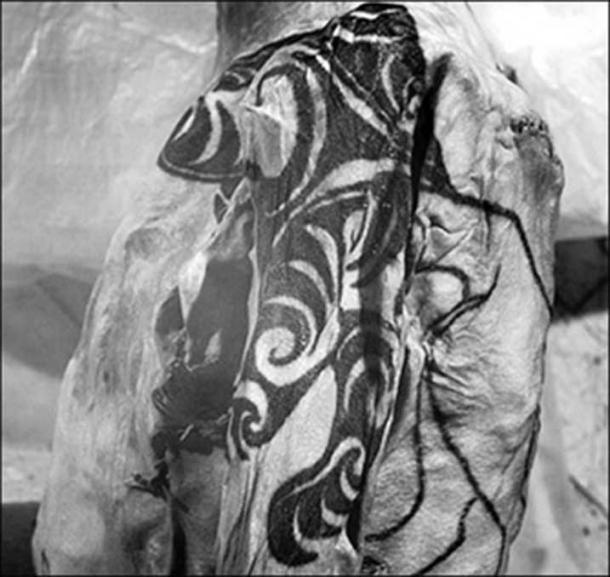
The elite couple was decorated with elaborate tattoos. (Lyudmila Barkova / Siberian Times)
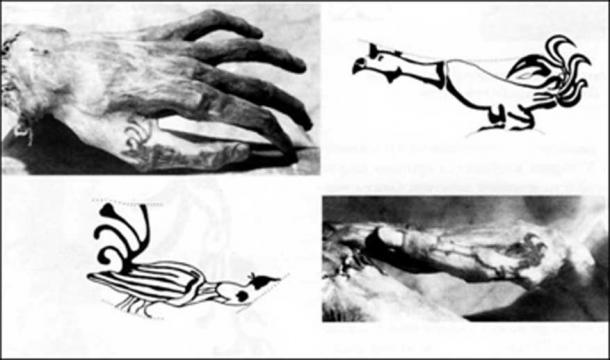
The elite couple was decorated with elaborate tattoos. (Lyudmila Barkova / Siberian Times)
Top image: 2,300 year old Pazyryk culture house has been reconstructed in the Altai Mountains. Source: Nikita Konstantinov / Siberian Times.
The article ‘2,300 year old wooden house is rebuilt, and it fits together down to the last centimetre’ originally appeared on The Siberian Times and has been republished with permission.


















